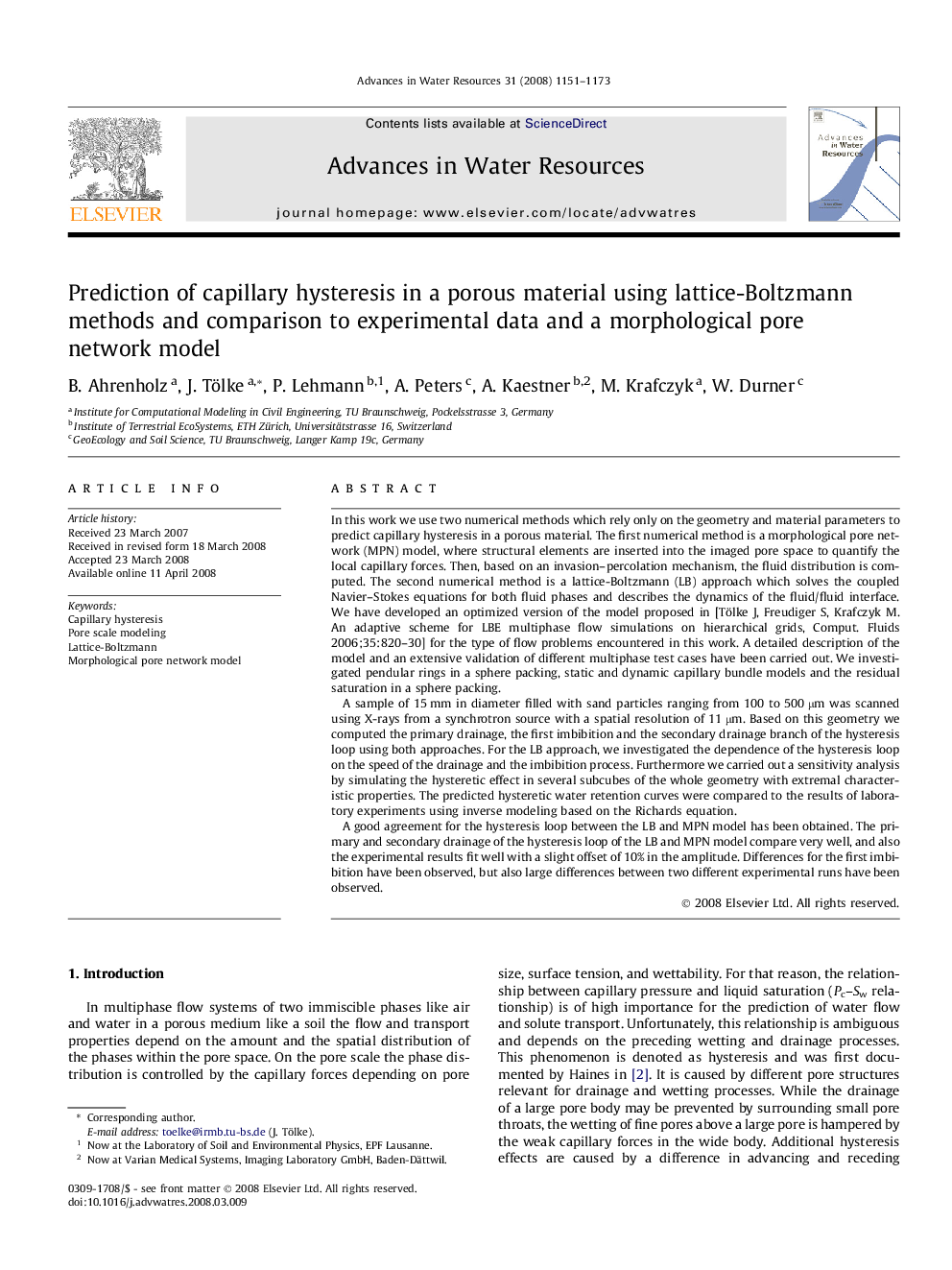| کد مقاله | کد نشریه | سال انتشار | مقاله انگلیسی | نسخه تمام متن |
|---|---|---|---|---|
| 4526964 | 1323870 | 2008 | 23 صفحه PDF | دانلود رایگان |

In this work we use two numerical methods which rely only on the geometry and material parameters to predict capillary hysteresis in a porous material. The first numerical method is a morphological pore network (MPN) model, where structural elements are inserted into the imaged pore space to quantify the local capillary forces. Then, based on an invasion–percolation mechanism, the fluid distribution is computed. The second numerical method is a lattice-Boltzmann (LB) approach which solves the coupled Navier–Stokes equations for both fluid phases and describes the dynamics of the fluid/fluid interface. We have developed an optimized version of the model proposed in [Tölke J, Freudiger S, Krafczyk M. An adaptive scheme for LBE multiphase flow simulations on hierarchical grids, Comput. Fluids 2006;35:820–30] for the type of flow problems encountered in this work. A detailed description of the model and an extensive validation of different multiphase test cases have been carried out. We investigated pendular rings in a sphere packing, static and dynamic capillary bundle models and the residual saturation in a sphere packing.A sample of 15 mm in diameter filled with sand particles ranging from 100 to 500 μm was scanned using X-rays from a synchrotron source with a spatial resolution of 11 μm. Based on this geometry we computed the primary drainage, the first imbibition and the secondary drainage branch of the hysteresis loop using both approaches. For the LB approach, we investigated the dependence of the hysteresis loop on the speed of the drainage and the imbibition process. Furthermore we carried out a sensitivity analysis by simulating the hysteretic effect in several subcubes of the whole geometry with extremal characteristic properties. The predicted hysteretic water retention curves were compared to the results of laboratory experiments using inverse modeling based on the Richards equation.A good agreement for the hysteresis loop between the LB and MPN model has been obtained. The primary and secondary drainage of the hysteresis loop of the LB and MPN model compare very well, and also the experimental results fit well with a slight offset of 10% in the amplitude. Differences for the first imbibition have been observed, but also large differences between two different experimental runs have been observed.
Journal: Advances in Water Resources - Volume 31, Issue 9, September 2008, Pages 1151–1173